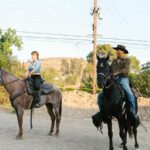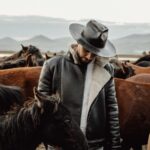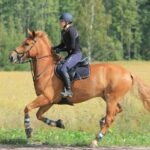Throughout the Renaissance period, spanning roughly from the 14th to the 17th century, horses emerged as powerful symbols of nobility, strength, and majesty in European art. Far from being mere background elements, these magnificent creatures often took center stage, portrayed with astonishing anatomical accuracy and emotional expression. Renaissance masters studied equine anatomy meticulously, understanding that the correct portrayal of horses demonstrated their artistic skill while satisfying their wealthy patrons—many of whom were avid equestrians. From Paolo Uccello’s dynamic battle steeds to Leonardo da Vinci’s anatomical studies, these painted and sculpted horses tell us much about Renaissance society’s values, technical achievements, and aesthetic ideals. The following journey through the most celebrated horses in Renaissance artwork reveals not just artistic masterpieces, but windows into a time when the horse represented the perfect union of nature’s beauty and human civilization.
Leonardo da Vinci’s Horse Studies and the Sforza Monument
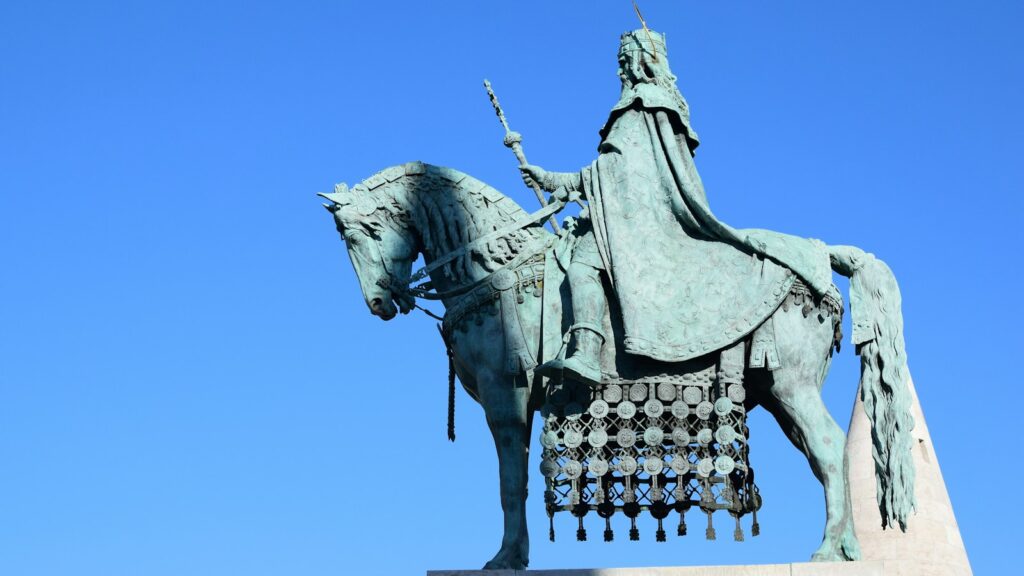
Leonardo da Vinci’s fascination with horses represented perhaps the most scientifically rigorous approach to equine depiction in Renaissance art. His notebooks contain countless detailed anatomical studies of horses in motion, revealing his obsession with capturing their muscular structure and proportions with unprecedented accuracy. The culmination of Leonardo’s equestrian interests was to be the monumental bronze horse commissioned by Ludovico Sforza, Duke of Milan, which would have stood over 24 feet tall when completed. Unfortunately, the bronze intended for the statue was requisitioned for cannons when Milan faced French invasion in 1499, and only Leonardo’s meticulous preparatory drawings remain as evidence of this ambitious project. In 1999, two full-scale recreations based on Leonardo’s designs were finally realized—one in Milan, Italy and another in Grand Rapids, Michigan—allowing modern viewers to experience what would have been the largest equestrian statue of the Renaissance era.
Uccello’s Dynamic Battle Horses

Paolo Uccello’s trilogy of paintings depicting the Battle of San Romano (c. 1438-1440) stands as one of the most extraordinary celebrations of horses in Renaissance warfare. These works showcase Uccello’s obsession with perspective, using the horses’ bodies as dramatic vehicles to demonstrate his mastery of the new technique. The horses in these battle scenes appear in various dramatic poses—rearing, charging, and falling—their bodies contorted into almost geometric shapes that serve both narrative and compositional purposes. Particularly notable is Uccello’s use of foreshortening in the fallen horses, where we see the animals from unusual angles that would have impressed contemporary viewers with their technical virtuosity. These horses are not mere mounts but active participants in the battle, their expressions and postures conveying the chaos and violence of warfare with remarkable emotional intensity.
Donatello’s Gattamelata: The Revival of Equestrian Monuments
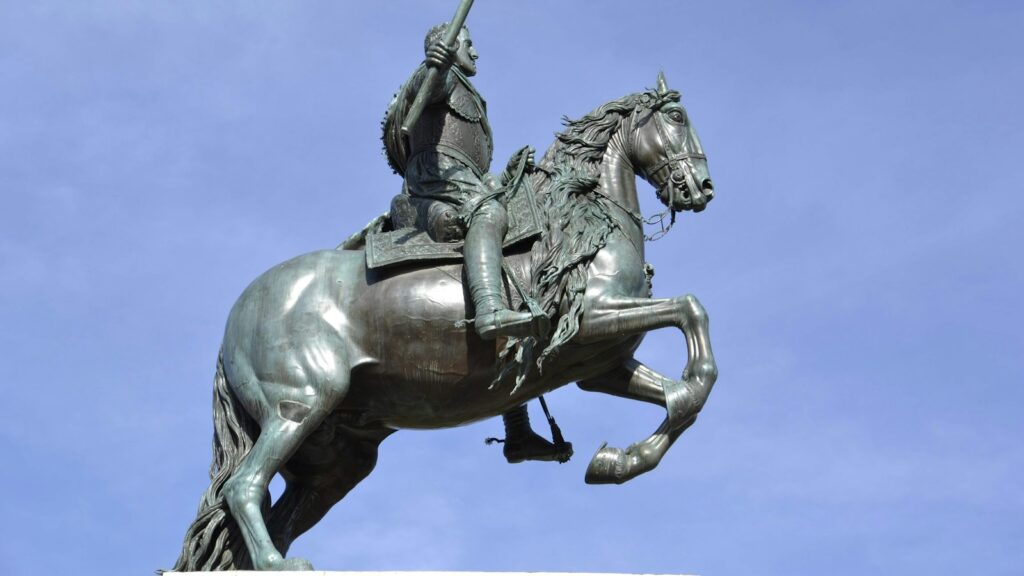
Donatello’s bronze monument to the condottiere Erasmo da Narni, known as “Gattamelata” (1447-1453), represents the first major free-standing equestrian statue created since ancient Roman times. Positioned in the Piazza del Santo in Padua, this masterpiece revived the classical tradition of honoring military leaders on horseback, influencing all subsequent Renaissance equestrian monuments. Donatello’s technical achievement is remarkable—the massive bronze horse stands in a controlled “collected walk” position known as parade gait, conveying both power and discipline. The horse’s expression appears alert yet calm, with detailed anatomical features including prominent veins and muscles that demonstrate Donatello’s careful observation of real horses. What makes this horse particularly celebrated is how perfectly it balances naturalism with ideal form, creating a sense of monumental dignity that complements the assured command of its rider.
Pisanello’s Courtly Steeds
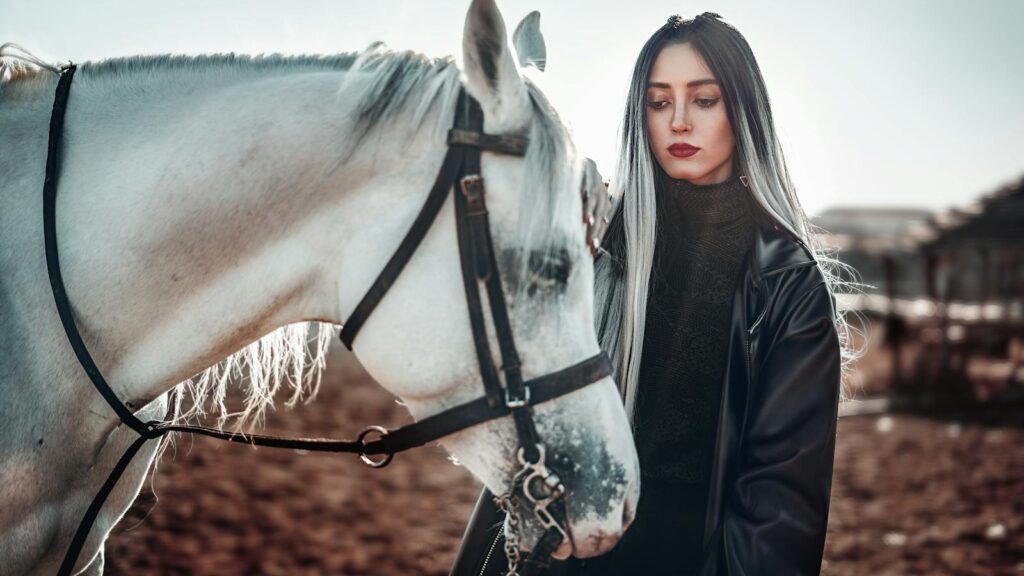
Antonio Pisanello distinguished himself as perhaps the greatest horse painter of the early Renaissance, renowned for his sensitive and detailed depictions of courtly steeds. His fresco “Saint George and the Princess of Trebizond” (c. 1438) in the Pellegrini Chapel of Sant’Anastasia in Verona showcases his extraordinary ability to capture equine beauty and character. Particularly notable are Pisanello’s numerous drawings of horses that served as studies for his paintings and medals, revealing his meticulous attention to details such as elaborate harnesses, decorative trappings, and the distinctive conformations of different breeds. Unlike some Renaissance artists who idealized horses, Pisanello often captured their individual characters, portraying specific horses that belonged to his aristocratic patrons. His expertise extended to depicting horses from different angles and in various gaits, demonstrating his remarkable observational skills in an era before photography could freeze such moments.
Verrocchio’s Colleoni Monument
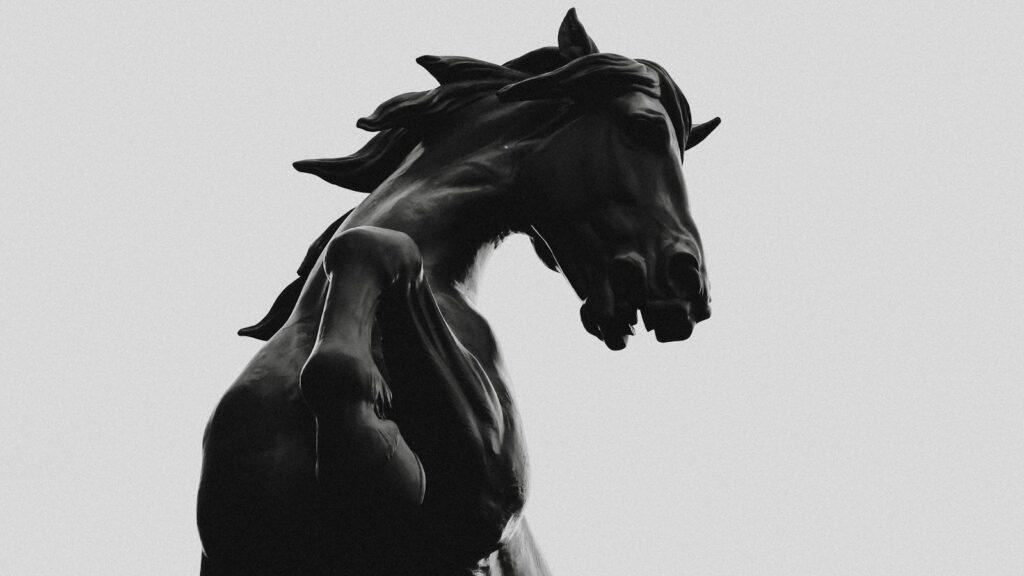
Andrea del Verrocchio’s bronze equestrian monument to Bartolomeo Colleoni (1480s) in Venice represents one of the most dynamic and powerful equestrian sculptures of the Renaissance. The horse appears caught in mid-motion, one hoof raised in what equestrians call the “levade” position, creating a sense of barely contained energy that perfectly conveys the aggressive character of the mercenary commander it carries. Unlike Donatello’s more stately Gattamelata horse, Verrocchio’s steed has flared nostrils, a turned head, and bulging veins that suggest a spirited, perhaps even dangerous animal. Technical innovation is evident in how Verrocchio solved the problem of balance—the raised foreleg creates an asymmetrical design that required sophisticated engineering to prevent the massive bronze from toppling forward. The horse’s anatomical accuracy, combined with its emotional expressiveness, made this monument hugely influential for later equestrian sculptures throughout Europe.
Raphael’s Horses in Religious and Mythological Contexts
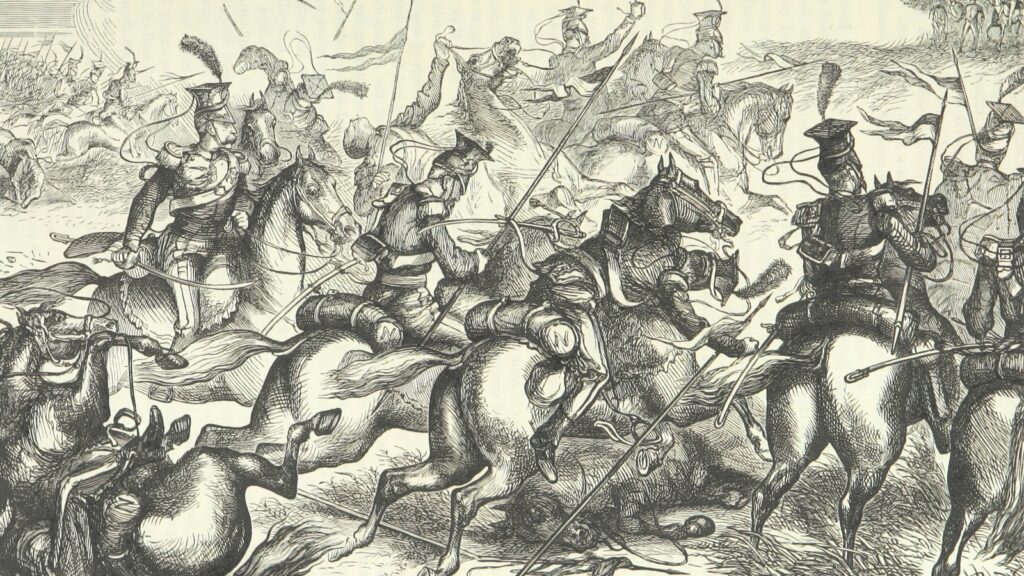
Raphael Sanzio incorporated horses into both his religious and classical compositions with a grace that reflected his harmonious artistic vision. In “The Vision of Constantine” (1520-1524), completed by his workshop after his death, the rearing white horse of Emperor Constantine becomes a dramatic focal point that enhances the miraculous nature of the vision. Similarly, in his small but exquisite painting “St. George and the Dragon” (c. 1505), the saint’s white horse leaps dynamically away from the monster while maintaining a position that allows the rider to strike with his lance. Raphael’s horses typically display ideal proportions and elegant lines that complement his human figures, creating visual harmony throughout his compositions. Unlike artists who specialized in equine subjects, Raphael integrated horses seamlessly into his narrative scenes, where they serve both symbolic functions and enhance the overall rhythmic flow of his compositions.
Dürer’s Apocalyptic Horses
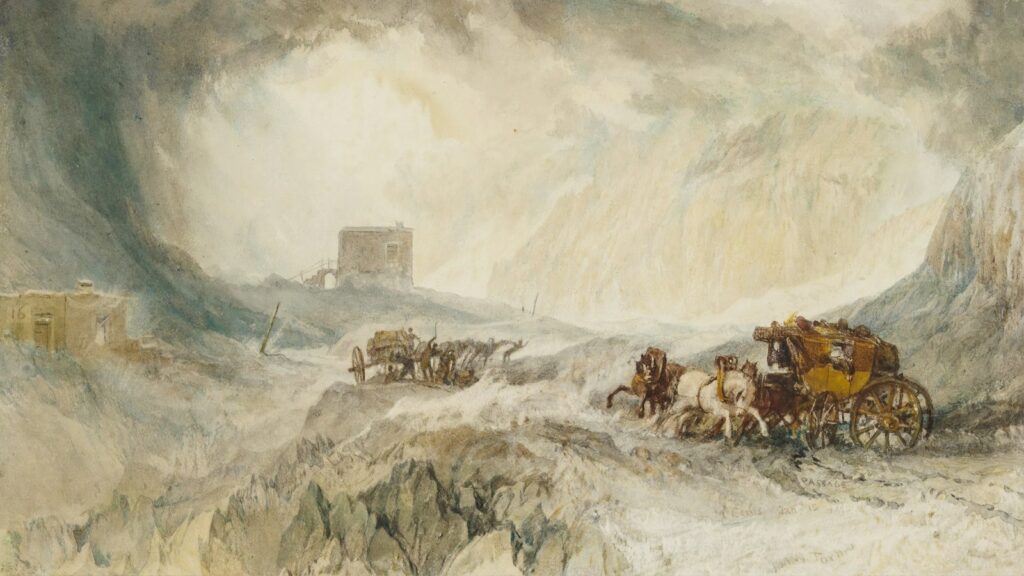
Albrecht Dürer’s woodcut series “The Apocalypse” (1498) features some of the most memorable and influential horses in Renaissance art, particularly in “The Four Horsemen of the Apocalypse.” These horses gallop across the composition with supernatural energy, trampling humans beneath their hooves as they carry the harbingers of the end times. What makes Dürer’s horses remarkable is how they combine careful anatomical observation with expressive, almost fantastical qualities that suit their apocalyptic context. Each horse possesses a distinct character corresponding to its rider’s role—from the skeletal mount of Death to the powerful charger of War. Dürer’s mastery of the woodcut medium allowed him to create horses with strong contours and dramatic silhouettes that remained legible despite the limitations of the printing technique. These horses became iconic images in European visual culture, influencing depictions of equines in dramatic narrative contexts for centuries.
Titian’s Imperial Equestrian Portraits
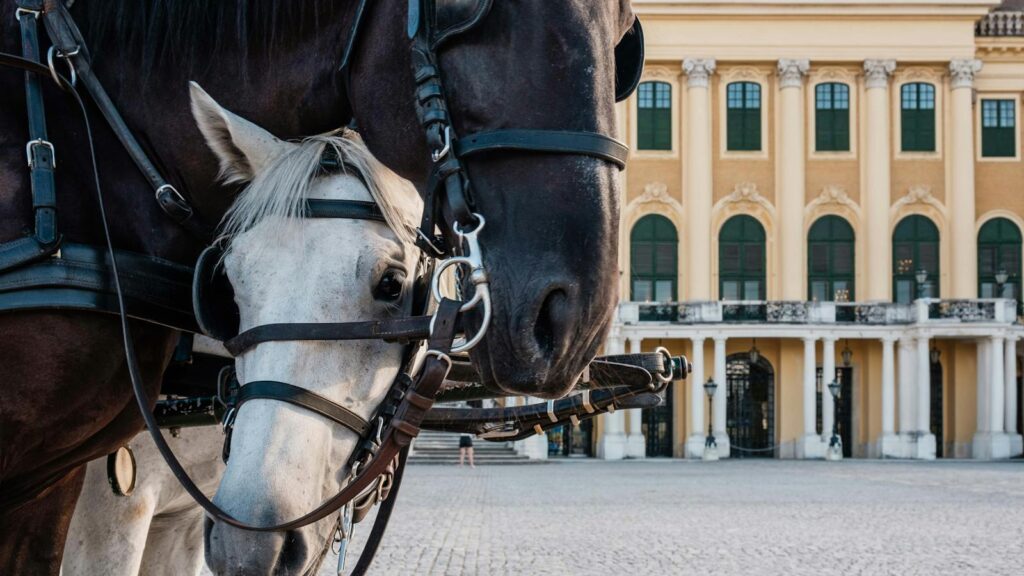
Titian’s “Equestrian Portrait of Charles V” (1548) established a new paradigm for royal equestrian portraiture that would influence court painting for generations. The Spanish Habsburg emperor appears mounted on a dark charger in a pose directly inspired by ancient Roman equestrian statues, creating visual connections between the Holy Roman Emperor and his imperial predecessors. Titian’s horse is portrayed with quiet dignity and controlled power, its dark coat gleaming with highlights that demonstrate the artist’s mastery of oil painting techniques. Unlike the more anatomically analytical approach of earlier Renaissance artists, Titian emphasized the atmospheric and emotional qualities of his equine subject, using loose brushwork to capture the play of light on the horse’s coat and the subtle details of its trappings. The restrained, collected posture of the horse reinforces the painting’s message of imperial control and authority, making the animal an essential component of the portrait’s political iconography.
Horses in Renaissance Tournaments and Pageantry Scenes
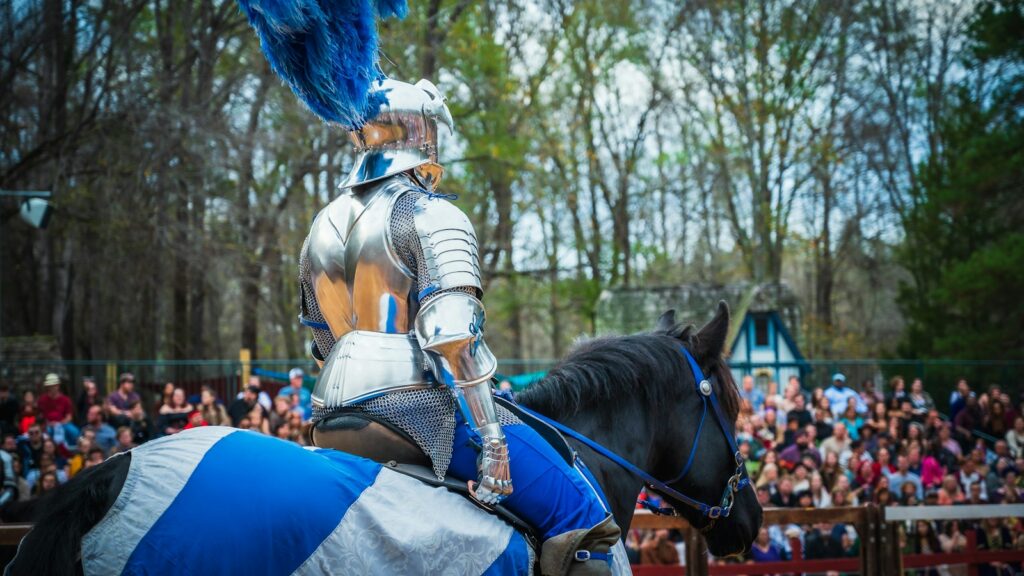
Renaissance artists frequently depicted the elaborately decorated horses that featured in tournaments, pageants, and ceremonial entries, creating visual records of these ephemeral spectacles. Hans Burgkmair’s woodcut series “The Triumph of Maximilian I” (begun 1516) showcases parade horses wearing fantastical decorative caparisons, ornate bridles, and feathered headdresses that transformed them into almost mythological creatures. Similarly, the “Palio di Siena” and other horse races appear in numerous paintings and prints, capturing both the competitive spirit and civic pride associated with these events. Artists like Pinturicchio included tournament scenes in their frescoes, showing horses with heraldic trappings that identified their riders’ familial affiliations. These ceremonial horses reflect the Renaissance fusion of medieval chivalric traditions with classical influences, their decorative elements often incorporating both Gothic and classical motifs that mirror the transitional nature of Renaissance culture itself.
Botticelli’s Mythological Steeds
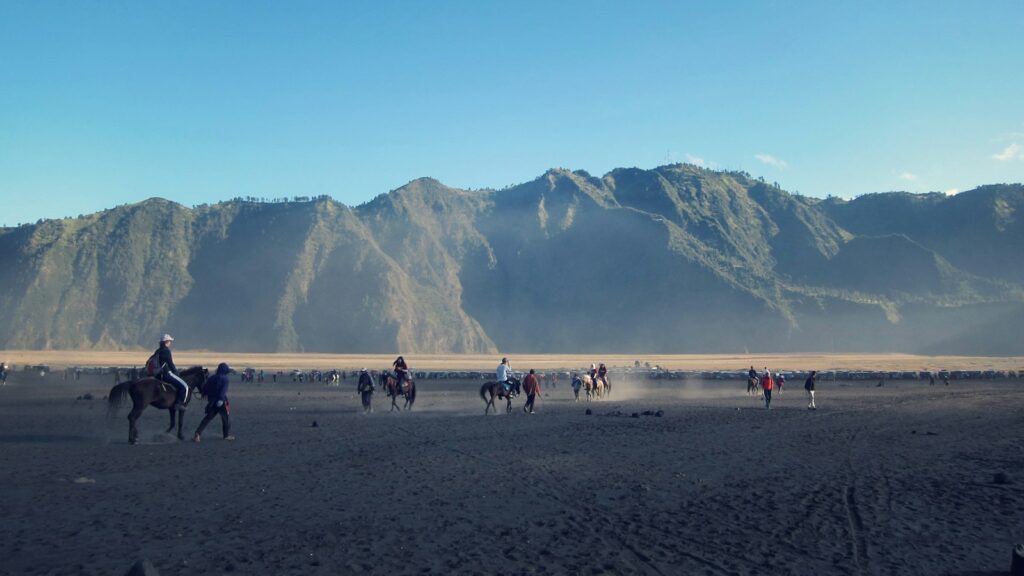
Sandro Botticelli incorporated horses into his mythological narratives with a distinctive lyrical quality that perfectly complemented his elegant human figures. In “The Story of Nastagio degli Onesti” (1483), a series of four panels based on a tale from Boccaccio’s Decameron, Botticelli depicts ghostly huntsmen on horseback pursuing a damned soul through a pine forest as punishment for her cruelty in life. The supernatural horses move with an unearthly grace that enhances the eerie atmosphere of these morality tales. Even more celebrated is Botticelli’s fragmentary “Adoration of the Magi” (c. 1475-1476), where elegantly posed horses stand among the gathered crowd, their dignified bearing and detailed trappings indicating their status as noble mounts. Botticelli’s horses typically display elongated proportions and stylized features that prioritize graceful line over strict anatomical accuracy, reflecting his lyrical approach to form that would influence Mannerist artists in the following generation.
Mantegna’s Perspectival Experiments with Equine Forms

Andrea Mantegna pushed the boundaries of equine representation through his bold experiments with perspective and foreshortening. His fresco cycle in the Camera degli Sposi in Mantua (completed 1474) includes a scene known as “The Meeting,” where horses are depicted at challenging angles that demonstrate Mantegna’s mastery of spatial illusion. Even more dramatic is his “Triumph of Caesar” series (1484-1492), where processional horses appear in complex arrangements that test the limits of perspectival representation. Mantegna’s horses are notable for their solid, sculptural quality, with powerful musculature that seems to emphasize their three-dimensional form even within the flat medium of painting. His interest in archaeology also influenced his equine depictions, as he carefully studied Roman relief sculptures of horses to inform his understanding of classical equestrian imagery. Through these innovations, Mantegna created horses that serve as vehicles for artistic virtuosity while maintaining their narrative importance within his historical scenes.
The White Horse in Religious Symbolism

White horses held special symbolic significance in Renaissance religious art, appearing in scenes of saintly triumph and apocalyptic visions. The white horse of St. George, slayer of dragons and patron saint of England, appears in countless Renaissance paintings, symbolizing purity and divine favor in the battle against evil. Similarly, in depictions of the conversion of St. Paul, a white horse often throws the future apostle to the ground at the moment of divine intervention, creating a powerful visual metaphor for spiritual transformation. White horses also feature prominently in Renaissance depictions of the Book of Revelation, particularly as the mount of Christ in the “Christ Triumphant” or “Christ Militant” iconography. Artists like Vittore Carpaccio made the white horse central to their religious narratives, using the animal’s symbolic associations with light, purity, and victory to enhance the spiritual message of their works. These horses transcended mere animal representation to become potent visual symbols within the complex iconographic language of Renaissance religious art.
Equine Portraiture: The Horse as Status Symbol

By the late Renaissance, horses became subjects of portraiture in their own right, reflecting their immense value and the prestige associated with fine horsemanship. Paintings like Giovanni Stradano’s “Horses of the Medici Stables” (c. 1566) depict prized horses from famous breeding programs, recording their distinctive physical characteristics with the same attention typically reserved for human portraiture. These equine portraits often emphasized the unique colorations, markings, and conformations that made certain horses valuable, sometimes placing them against backdrop landscapes suggesting their place of origin. The development of this genre coincided with the refinement of horse breeding in European courts, where bloodlines were meticulously documented and valuable stallions exchanged as diplomatic gifts between rulers. Renaissance equine portraiture thus serves as a visual record of emerging breed standards and the increasing specialization of horses for different functions from warfare to ceremonial display, representing an important intersection between art history and the history of animal husbandry.
Conclusion

The horses of Renaissance art represent far more than mere animal studies—they embody the period’s intellectual and aesthetic achievements. Through these equine depictions, we witness the Renaissance’s defining characteristics: the revival of classical forms, the development of scientific observation, technical innovation in artistic media, and the expression of humanist ideals. Each artist approached the challenge of depicting horses through their unique perspective, whether through Leonardo’s scientific precision, Uccello’s geometric dynamism, or Titian’s atmospheric majesty. These celebrated horses remain culturally significant because they capture not just the physical form of a beloved animal but the spirit of an age that valued both naturalistic observation and symbolic meaning. In studying these magnificent equine subjects, we gain insight into Renaissance society’s values, its technical achievements, and its complex relationship with the natural world—making these horses enduring symbols of one of Western civilization’s most creative and influential periods.




